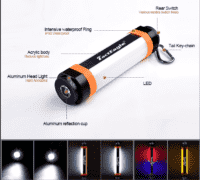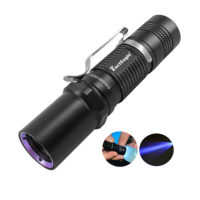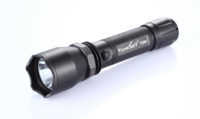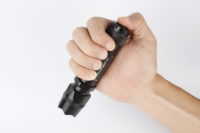Aside from gold and jade, amber is another popular kind of jewelry. As it become popular, more and more fake ambers come out. Can you tell the real ambers from the fake ones? Do you know where your ambers from? This article will give you some clues about these questions.
As is known to the amber collectors, most real ambers have fluorescent reaction, which means, when the amber is under UV light, they will shine blue light. This tip can help you judge most ambers. But not all real ambers have this reaction. if the amber is wrapped with a thick oxide layer or mineral wrapper, no fluorescent reaction when you shoot UV light to the amber.
From the amber was formed to it was discover, the process may be quite a long time. During this period, the amber may be badly oxidized, or with the surface wrapped by mineral. In this case, the fluorescent reaction is weak when it under uv light. To tell whether the amber is real or not, you can simply polish the surface with sandpaper till the amber body comes out. After that, you can shine it with UV flashlight to see whether it is real. If there is still no fluorescent reaction, it should be something else rather than amber.
How to Tell Amber, Copal and Rosin
It is hard to tell the three with nake eyes, but with a UV flashlight, you can easily tell which is which.
1. the fluorescence reaction on rosin is dark green, weak fluorescence reaction.
2. the fluorescence reaction on natural amber is relatively strong, for example, sea amber’s is light green and pit amber’s blue.
3. Most copal has no fluorescence response except some India copal.
How to judge where a amber is from
UV flashlight can help you tell where ambers are from, but you can not tell where all ambers are from only with UV flashlight, but you need some other tools as well, for example, white light flashlight.
1. The sea amber’s fluorescent reaction is light green.
2. Most gold-green, blue-green, and sky-blue ambers from Dominica need to be distinguished under sunlight and white light flashlight, it is hard to tell them with UV flashlight only.
3. Mexico’s main gold green amber, blue and green-based, fluorescence reaction is similar to those from Dominica.
4. Burma amber varieties, such as the general Myanmar amber brown amber, golden amber, gold and blue amber and so on, the fluorescence reaction is blue-white.
So, till here, you know the UV flashlight can help you tell amber from other similar materials, and where the amber is from, but do you know what UV flashlight is good for these uses? Here, I get some tips to share.
In the market, there are 365nm and 395nm UV flashlights. After comparison, 365nm flashlight is more powerful, it can help you clear see the inner structure of the amber. So, to ensure the fluorescent reaction is accurate, you’d better get a Tank007 365nm UV flashlight.




